Cardboard pavilion burned in Valencia "to highlight the emptiness of political discourse"
This geometric cardboard pavilion by art collective Pink Intruder was set alight in Valencia as part of the city's Fallas festival earlier this year (+ slideshow).
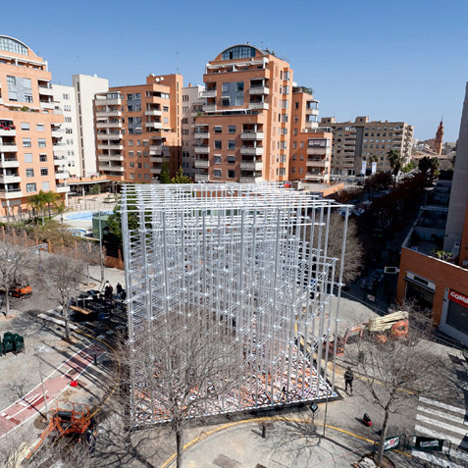
The Ekklesia pavilion – named after the principal assembly of Athenian democracy in ancient Greece – was erected in the centre of a crossroads in the Spanish city, which hosts the festival each March.
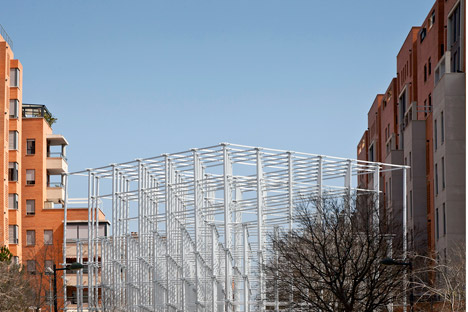
Pink Intruder created the installation as a contemporary take on the traditional "falla" structures that are built and then burned during the festival.
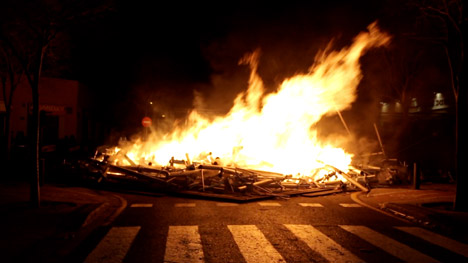
"The ultimate goal of these installations is to be burned to celebrate the arrival of spring. In this context we built a structure entirely of cardboard and wood joints," said the collective.
"The purpose was to investigate to what extent we could carry up this type of structure, and also to place in a traditional context a contemporary image to provoke the debate between tradition and modernity."
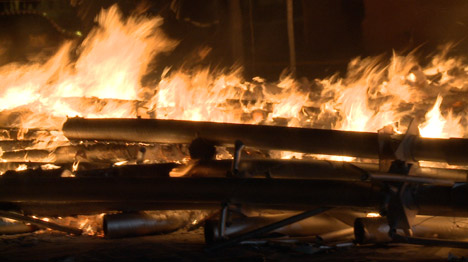
Due to heavy rain and winds, the pavilion was taken apart and burned on the ground for safety reasons.
"We had extreme winds and heavy rain for several days," said Miguel Arraiz García of Pink Intruder. "That's not good for cardboard structures. The police told us not to burn it standing up so we put it down to the ground before the burning."
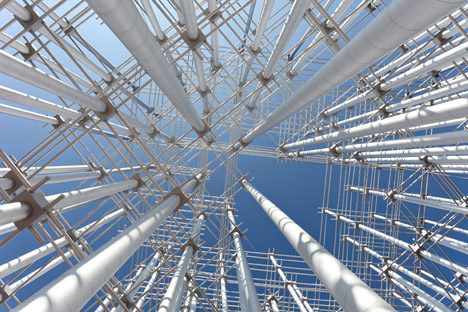
The lattice-like installation was designed to represent a temple "where citizens can meet and realise the power they have to change things through debate and confrontation of ideas."
Some of the columns were screen-printed with political messages submitted by the public "to highlight the emptiness of political discourse," Pink Intruder said.
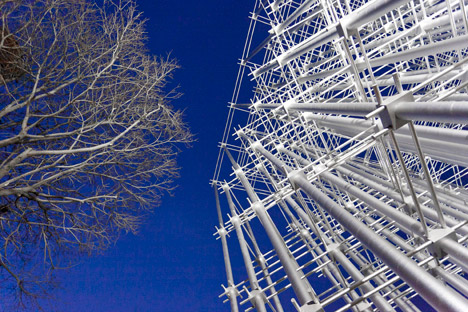
"Its function was to highlight a lost heritage and to emphasise that any innovation in a traditional context should be based on a thorough knowledge of tradition."

The structure comprised eight different horizontal layers that were supported at various heights on a seven-by-seven grid of vertical columns.
Related content: see more stories about cardboard architecture and design
These layers were formed from parallel pairs of thin cardboard tubes, which fed into connector elements at each joint with the thicker uprights.
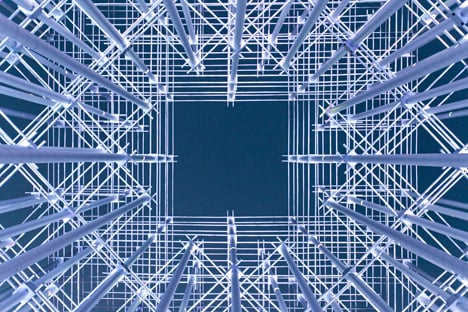
The first set of short lengths, raised 2.8 metres above the base, zigzagged between the outer two rows of columns. Just over a metre above, the next level bridged across to the next set of verticals in the same way.
The next four layers slowly filled up the remaining space towards the centre, so the structure appeared to become denser towards the top.
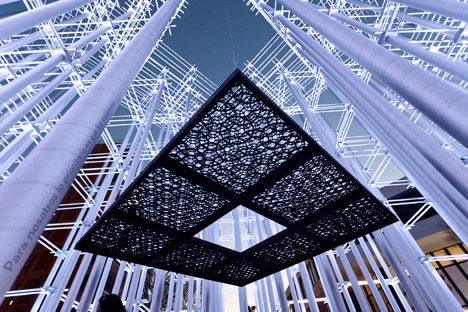
For the final two layers, the beams were oriented perpendicular to the square outline of the base rather than at diagonals, creating an additional overlaid pattern.
A square gap was left in the top of the uppermost level, under which a perforated surface patterned with overlapping circles was suspended.
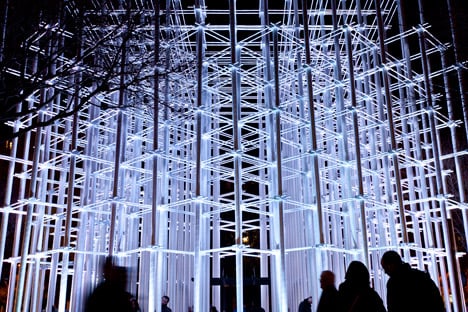
The metallic finish of the tubes shimmered in the sunlight, while LEDs were used to illuminate them after dark.
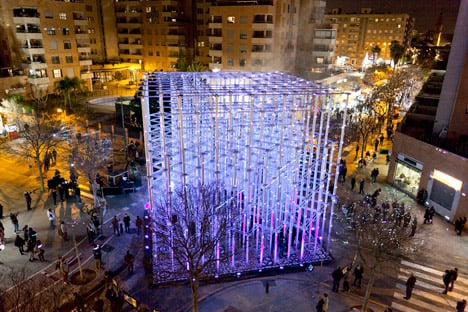
The podium of the structure – which bears a resemblance to Sou Fujimoto's 2013 Serpentine Gallery Pavilion – was decorated with 96,000 painted mosaic tiles created by members of the public in a series of workshops.
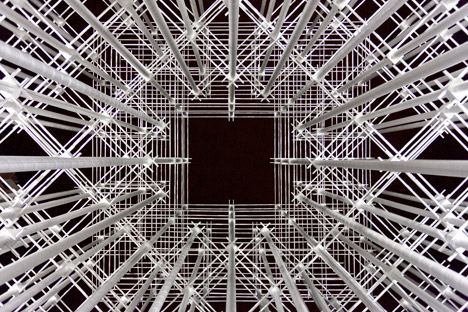
"We wanted it to be a participatory project and therefore the completion of the mosaic was made in different workshops with children at risk of social exclusion, and various neighbourhood associations," the team said.
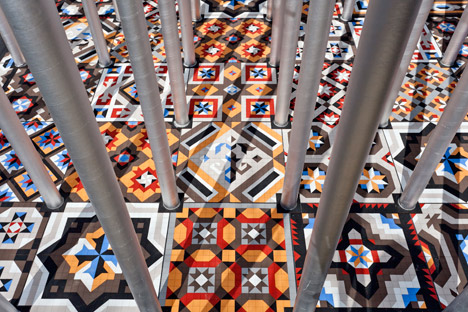
The mosaic is based on nolla, a traditional Valencian tile pattern that fell out of use in the middle of the 20th century.
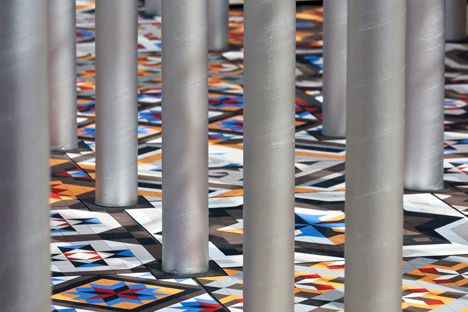
The festival of Las Fallas, officially a celebration of Saint Joseph, is thought to have its origins in pagan celebrations of the Spring Equinox.
Photography and video are by Noel Arraiz.
Project credits:
Collaborators: ARAE Patrimonio, Asociacion Cultural Falla Cronista, Retales, Josep Martí, Barret Films, Led Visuals, Ignite, Valencia Vibrant, Choreoscope, Visorifashionart